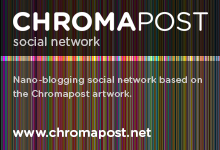Published in the Imprint Blog of Print Magazine
go to the original article >
The annual Belgrade design conference, “(Graphic) Designer: Author or Universal Soldier,” was subtitled “Action” this year, and included a street exhibition called “Design of Dissent,” consisting of works featured in the book, Design of Dissent by Milton Glaser and Mirko Ilić (Rockport, 2005). An hour before the opening, after the works had been installed on panels on busy Knez Mihailova street, many of the them — originally designed to promote a different view from the prevalent current — were touched up by ever so vigilant vandals. In such a secret operation you don’t stop for long to pick and choose your targets, not to mention read, but instead you react to the most prominent thorns in your self-righteous side. Undesirable words and symbols were sprayed over, more desirable symbols were added, and one of the panels was even stolen.


Escalating hooliganism in Serbia in the past several years is evidently a result of blatant right-wing "astroturfing". The country is moving slowly and painfully towards European integration, but many political decisions in that direction are met with fierce opposition from the pan-Serbian, clero-nationalist right, especially in this parliamentary/presidential election period. The form of their interventions ranges from persistent “pro-Serbian and anti-everything else” graffiti to alarmingly massive and violent riots under the guise of “spontaneous protests of discontented youth”. But those discontented youngsters are often not very well informed.

The first thing that sprang to my mind when I saw the word "dissent" (Serbian: otpor) crossed out on the exhibition’s title panels is that the perpetrators mistakenly thought the exhibition was about Otpor, a 1990s movement against the regime of Slobodan Milošević. In their book of references, Otpor is still an anti-Serbian movement although it’s been defunct for almost a decade. The fist on the Iranian poster, “Fight”, was obviously mistaken for Otpor’s once ubiquitous fist symbol and therefore crossed out. Although the Arabic based Persian script might have provoked an Islamophobic reaction as it did on the book cover of another work from Iran, Dictators in the Mirror of Medicine, I wouldn’t bet they recognized Hitler’s face there. One of my friends suggested a similar motive might have been behind the forceful removal of a poster featuring a Bosnian girl. Another panel with the work featuring a pink razor blade (gay teen suicide) received special treatment. While the gay theme may not have been obvious at first glance, the work was apparently more carefully studied and enriched by two whole words: "HIV sickos".

The Serbian Cross, part of the country’s coat of arms, is regularly used by those tradition keepers to cover over anything “anti-Serbian”, and this exhibition was peppered with it. So amongst some others, it ended up on a poster with the NATO symbol. Ironically the Slovenian poster from 2003 was designed to tilt the national referendum against joining NATO. Participants in the conference answered back with a third voice in this dialogue by turning the C-shaped “firesteel” elements of the Serbian Cross into hearts. Oddly enough many symbols of “anti-Serbian” forces like Croatian and American flags, hammer and sickle or a red star have remained untouched (so far). Is it a paradigm shift or ideological inconsistency? I’d say a lack of time.

Even when decontextualized, presented as an art show, or misinterpreted, these powerful works of graphic art rarely lose their potency or fail to raise questions. They are never merely just shown and admired, they always provoke action. In this case they also expose the dirty underbelly of a country that is in perpetual transition and political turmoil.
All photo credits: www.designed.rs
















No comments:
Post a Comment